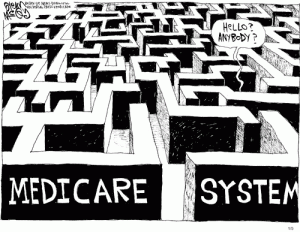For the past several years, Air Force Village West (AFVW), now doing business as Altavita Village, in Riverside, California, has been languishing in financial straits.
By Jack Cumming
For the past several years, Air Force Village West (AFVW), now doing business as Altavita Village, in Riverside, California, has been languishing in financial straits. Overexpansion led to overcapacity with a drop in occupancy, which recently has hovered at about 50%. The Board sought to right things by bringing in new management and made every effort to meet obligations to keep the debt providers whole. These efforts have persisted over several years during which the debt providers have invested additional cash to allow AFVW to continue operating with a cash deficit.
When All Else Failed
When all else failed, the debt creditors petitioned to have the community placed into receivership under a state court. The aim throughout has been to meet the legal obligation to keep the debt providers whole. Residents are junior claimants in a senior housing failure, on a par with trade creditors such as food purveyors and other suppliers. After two auctions ended unsatisfactorily for the Board and the debt providers, the decision was made to turn to Federal bankruptcy so that the continuing care contracts held by the residents could be altered or voided.
The bankruptcy judge allowed the residents to form a Resident Committee, so for the first time, the residents had legal representation. The California Attorney General was involved since it was likely that any prospective purchaser would require conversion of AFVW from tax-exempt to for-profit. The proposal was to sell the community to an age 55+ rental operator and to bring the residents into line with that business model. A provider, Westmont Senior Living, agreed to serve as a stalking horse bidder to ensure that a final auction would succeed.
Critical Hearing
At a critical hearing on May 14th, it’s fair to say that all parties with responsibility for the residents . . . the Resident Committee, the Attorney General’s representative, and the Continuing Care Contracts Branch of the California Department of Social Services (the responsible regulator) . . . all had qualms about the proposal. The judge, likely contemplating the alternative, is said to have asked the Attorney General’s representative, “What happens if Westmont then decides to withdraw?”
The answer could be troubling since that might lead to liquidation, which could be devastating for the residents. The judge, likely moved by the concern that residents might lose their homes, agreed to allow the auction, with Westmont as the lead bidder, to proceed.
The Auction
The auction will be open at least till May 30th to allow additional bidders to qualify. If Westmont then stands alone as the sole bidder, it’s likely that its offer will prevail. Westmont was chosen by the Board as the stalking horse bidder over another bidder, WellQuest, which some residents believe might have been more favorable to residents at the expense of the legal seniority of the debt obligations. Whether WellQuest will seek to qualify as an alternative bidder, or if other bidders will emerge, remains uncertain.
Expectation of Protection
In other bankruptcy cases which I have followed beginning with Virginia’s The Glebe, the bondholders took the brunt of the financial hit to shield the residents. That has been the common pattern in CCRC failures. AFVW is an exception. Legally, the interests of the debt investors are senior to those of the residents though, morally and perhaps ethically, residents who have invested entrance fees, have a reasonable expectation of protection.
In this instance, as in the Pacific Homes case many years ago, it appears to me that the State of California followed a strictly legal course to the detriment of the residents. In the Pacific Homes case, the Trustee in bankruptcy concluded, in part, “The State of California shares responsibility for the continuation of this fraud.” It appears that the State of California continues to struggle with its CCRC oversight responsibilities.








